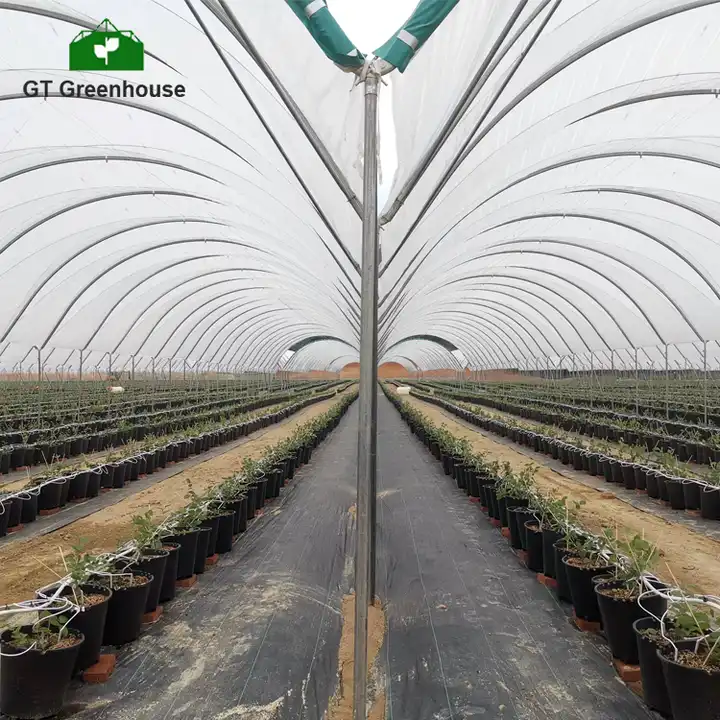Polyethylene sheets have become a popular choice for greenhouse coverings, offering numerous benefits that contribute to efficient and sustainable crop cultivation. These versatile and cost-effective materials have revolutionized the greenhouse industry, enabling growers to create controlled environments that optimize plant growth and protect crops from adverse weather conditions. In this article, we will explore the benefits of polyethylene sheets for greenhouses, highlighting their role in advancing sustainable agriculture and improving crop productivity. By understanding these advantages, farmers can harness the potential of polyethylene sheets to create resilient and productive greenhouse systems.
Optimal Light Transmission and Distribution
1. High Light Transmission:
Polyethylene sheets used in greenhouses offer excellent light transmission properties. They allow a significant portion of sunlight, including the photosynthetically active radiation (PAR), to pass through and reach the plants. This promotes efficient photosynthesis, essential for plant growth and productivity. The high light transmission of polyethylene sheets ensures that crops receive the necessary light energy, even during cloudy or low-light periods.
2. Diffused Light Distribution:
Polyethylene sheets have the ability to scatter and diffuse light as it enters the greenhouse. This diffusion effect reduces the intensity of direct sunlight, preventing hot spots and uneven light distribution within the structure. The diffusion of light helps to minimize shading effects and ensures that plants receive uniform light exposure, promoting balanced growth and reducing the risk of sunburn or photoinhibition.
Energy Efficiency and Climate Control
- Thermal Insulation:Polyethylene sheets provide effective thermal insulation, helping to maintain stable temperatures within the greenhouse. They create an enclosed environment that minimizes heat loss during colder periods, reducing the need for additional heating. Similarly, during hot weather, the sheets help to block excessive solar radiation, preventing overheating and reducing the energy required for cooling. This energy-efficient design lowers operational costs for greenhouse owners and promotes sustainability.
- Moisture Management:Polyethylene sheets used in greenhouses act as a barrier to prevent water vapor from escaping. This reduces moisture loss through evaporation, helping to maintain adequate humidity levels within the structure. The controlled moisture levels contribute to plant health, preventing dehydration and promoting optimal growth conditions. Additionally, the sheets help to protect crops from excessive moisture during heavy rains, reducing the risk of water-related diseases.
- Ventilation and Airflow:Polyethylene sheets can be easily adjusted or rolled up to allow for proper ventilation and airflow within the greenhouse. This feature enables growers to regulate temperature, humidity, and carbon dioxide levels, creating an optimal environment for plant growth. Adequate ventilation also helps to prevent the buildup of excess heat, humidity, and plant pathogens, reducing the risk of diseases and improving crop health.
Durability and Cost-Effectiveness
UV Resistance and Longevity
Polyethylene sheets for greenhouses are designed to resist ultraviolet (UV) radiation, ensuring extended durability and longevity. They can withstand prolonged exposure to sunlight without degrading or becoming brittle. UV-resistant polyethylene sheets offer a longer lifespan compared to other materials, reducing the need for frequent replacements and lowering overall maintenance costs.
Cost-Effectiveness
Polyethylene sheets are cost-effective compared to other greenhouse covering materials such as glass or rigid plastics. They are more affordable to purchase and install, making greenhouse construction more accessible to a wider range of growers. Additionally, the lightweight nature of polyethylene sheets reduces the structural requirements of the greenhouse, further reducing construction costs.
Polyethylene sheets have revolutionized greenhouse cultivation by offering a range of benefits that enhance crop productivity and contribute to sustainable agriculture. Their high light transmission and diffusion properties optimize photosynthesis, while their thermal insulation capabilities and moisture management contribute to energy efficiency and climate control. The durability and UV resistance of polyethylene sheets ensure long-lasting performance, polythene sheet for greenhouse reducing maintenance costs and promoting cost-effectiveness. By harnessing the advantages of polyethylene sheets, growers can create controlled environments that protect crops, maximize yields, and minimize the environmental impact of greenhouse cultivation. As the demand for sustainable and efficient farming practices continues to grow, polyethylene sheets play a crucial role in advancing greenhouse technology and supporting the future of resilient and productive crop production.
